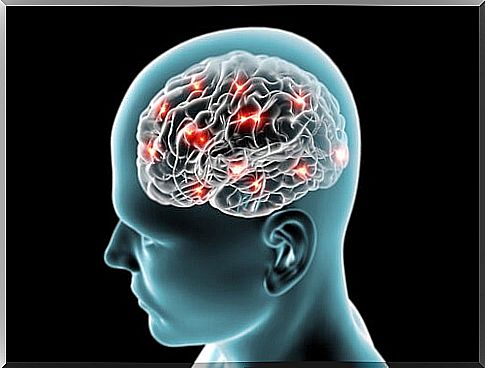Clonazepam: What It Is And What It Is Used For
Clonazepam is a benzodiazepine drug used as an antiepileptic drug because it reduces brain activity. You know what this means? Have you ever heard of this drug? If you are curious to know more about it, do not stop reading everything that we are going to tell you below.
It can be administered orally or intravenously.
What is epilepsy due to?

An epileptic seizure occurs from a neuronal focus that is activated by stimulus or spontaneously. From this focus, called the epileptic or epileptogenic focus , the stimulus spreads to adjacent neurons through neuronal synapses. This results in what we know as an epileptic seizure, which can also be caused by structural brain abnormalities.
An epileptic focus is a neuronal group that is activated excessively by the decompensation of neurotransmitters. These are the chemicals that neurons use to transmit signals from one to another. When a neuron receives a stimulus, it responds by releasing a neurotransmitter that will reach another neuron. Neurotransmitters can be:
- Activators, if they cause the excitation or activation of the second neuron, favoring the transmission of the impulse. The most implicated in epilepsy is glutamate.
- Inhibitors, if they cause the cessation of signal transmission, such as gamma-aminobutyric acid (GABA).
In epilepsy episodes, either glutamate activity is increased (activator) or GABA activity (inhibitor) is decreased in a specific neuronal region. As a consequence, the epileptic focus is activated abnormally and the signal propagates following neural circuits. The manifestations will depend on the location of the outbreak and its spread.
Mechanism of action of clonazepam

Clonazepam is a long-acting benzodiazepine. It binds to and activates receptors in the brain called BZ (benzodiazepine) receptors. In other words, it is a BZ receptor agonist.
BZ receptors enhance GABA activity, which is decreased during epileptic seizures. The increase in this brain inhibition slows the spread of the seizure, although it does not act on the epileptogenic focus.
Clonazepam is administered mainly orally or intravenously, its action begins 20 to 60 minutes after its administration. The effect varies from adults to children, and can last up to 12 hours.
Once in the blood, it crosses the blood-brain barrier and reaches the nervous system. It should be taken into account that it is metabolized in the liver and is mainly eliminated in the urine. For this reason, its dose should be adjusted when given to people with impaired liver function.
On the other hand, this drug is capable of crossing the placental barrier and, therefore, its use should be considered in the last trimester of pregnancy. Among its possible harmful effects on the fetus, are hypothermia and respiratory depression. Also, clonazepam is contraindicated during lactation.
Clonazepam indications

There are different types of epilepsies. Depending on their characteristics, some drugs or others will be used. Clonazepam is used primarily in childhood, especially in generalized seizures that spread throughout the body and lead to loss of consciousness. There are two kinds:
- Little bad type epileptic seizures : They are also called absence seizures . They are characterized by a sudden loss of consciousness, without falling to the ground or convulsive movements. The only thing observed is that the subject stops performing the activity he was doing: talking, eating, walking, etc. After a few seconds, the individual resumes the activity without remembering the episode. On many occasions, they are triggered by intermittent light sources (ILE or intermittent light stimulation) or in hyperventilation situations.
- Grand mal type epileptic seizures : technically known as tonic-clonic seizures. They are the best known, but not the most frequent. Subject abruptly loses consciousness and muscle tone, and falls to the ground.
At first the subject stiffens. Then you go into violent seizures that last a few seconds. When the seizures stop, the patient regains consciousness after a period of confusion, with no recollection of the crisis. In addition, these crises can associate vegetative alterations such as increased heart rate and blood pressure.
In adults
- Focal seizures : they do not affect the whole organism. They focus on a certain area and are very varied. It can present with visual and olfactory alterations, loss of sensitivity, alteration of consciousness or temporary paralysis of some limb, among others.
- Status epilepticus : they represent a pathological state of emergency. Status epilepticus is spoken of when the seizure lasts more than thirty minutes or when two or more seizures occur without recovery of consciousness.
- Other types of adult epilepsy.
According to the information provided by the Vademecum portal, the drops of this medicine should be mixed with water, fruit juices or infusions and administered with a spoon to the patient. They should never be administered directly from the container to the mouth.









